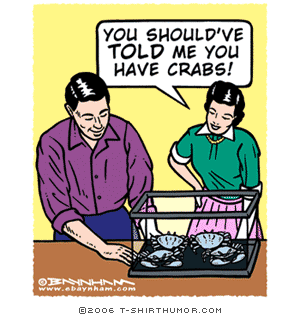My little boy turned 2 yesterday and my family and I went all out to make this a memorable event. He’s into Paw Patrol (cartoon about dogs who rescue) and so the house was littered with Paw Patrol posters, napkins, plates, everything and dad’s wallet was depleted.
Worth it when I saw the look on his face.
I was in charge of picking up cake and food for the evenings’ BBQ from a local grocery store. In Manitoba (Canada) there is no on-site disclosure system to inform me how the place fared on their latest health inspection but I have done enough of them in my time to understand what to look for when I am shopping/dining and I ask questions, it’s the food safety in me. I observe behaviors; it gives me a more comprehensive picture of a food establishment’s culture. The City of Baltimore is proposing that restaurants post their latest inspection report to increase public transparency. Anything to better inform the public on food safety is better than nothing. I am curious to see if patrons will actually read the report and accurately assess the risk.
Baltimore Sun reports
At least once every year each of Baltimore City’s approximately 5,700 restaurants and eateries must pass a health department inspection in order to stay in business. Those checks are essential not only to ensure that minimum standards of cleanliness are observed in food preparation and service but also to prevent the spread of serious foodborne illnesses such as Norovirus and Salmonella. Yet until recently the public had virtually no way of knowing when a restaurant failed to pass muster or the reasons officials shut it down. Baltimore needs to make the process more transparent so that citizens can be more confident making up their own minds about where and what to eat.
A bill last year sponsored by City Councilman Brandon Scott would have required health department officials to assign a letter grade to restaurant inspection reports and display the results in a prominent place. Many other cities, including New York, have adopted similar grading systems over the initial objections of restaurateurs who argued consumers would confuse it for an endorsement of some restaurants over others. That appears not to have happened in the Big Apple, where the restaurant industry is still booming. Yet Mr. Scott’s initiative ultimately failed in the council, even though the debate did convince Health Commissioner Dr. Leana Wen to post restaurant inspection reports on her department’s website.
Now Mr. Scott is back this year with a new proposal that would require restaurants to post their latest health inspection reports in plain view outside their shops. Unlike his earlier effort, this one wouldn’t require inspectors to give restaurants a letter grade. We appreciate restaurants’ objection to such a system but also the value an easy-to-understand rating would have for diners. Though it may be unlikely that potential patrons would be as inclined (or equipped) to judge the contents of an entire inspection report as they would a simple letter grade, posting them would still represent a vast improvement in transparency. Diners could look up a restaurant’s inspection report on the Internet, but they’re much more likely to consider the issue of food safety if reports are posted in plain sight.
“We need to join the rest of the civilized world on this issue,” Mr. Scott says. “The city inspection reports are already on line, and there are only a handful of major cities that don’t require restaurants to show their health department reports on site. In Baltimore, for some reason, we’ve been slow to do that.”
The federal government estimates that about 1 in 6 Americans are sickened by a foodborne illness each year, which adds up to about 48 million cases nationally. Though the American food supply is considered one of the safest in the world, foodborne illness account for an estimated 128,000 hospitalizations and 3,000 deaths every year. Young children, the elderly and people with weakened immune systems are at greatest risk for contracting such diseases, but they can strike anyone of any age with deadly effect.
That’s why we urge the City Council to revisit Mr. Scott’s proposed legislation with the aim of helping consumers judge for themselves whether the food they are offered is safe to eat. Some restaurant owners object that posting inspection reports prominently on site could confuse diners who may not know how to interpret the results or who may become alarmed by a reported problem that appears to be more serious than it really is. But that’s a cause to educate the public, not to hide important information. If a report prompts consumers to ask questions about a particular food safety issue, it’s probably something the restaurant owner ought to be paying more attention to anyway.
Would any requirement that establishments post their inspection reports in a prominent place make customers less likely to patronize a particular restaurant or eatery? We doubt that any of the city’s top-tier dining places would see much, if any, change in consumer attitudes, not least because they’ve spent years developing reputations for excellence in all aspects of their business, including food safety and cleanliness. It’s the smaller, more informal neighborhood establishments that are most likely to feel the effects of a change in the law, but they’re also the most likely to be cited for health code violations. By encouraging them to strive for a clean bill of health every time Mr. Scott’s proposed legislation would give them more than enough incentive to offer fare that is not only tasty but safe to eat as well.
As for the criticism this proposal is bound to receive that restaurant inspections are a minor issue compared to Baltimore’s epidemic of violence, we would note that Brandon Scott is the last city official who could be accused of paying insufficient attention to the crime rate. On the contrary, no member of the council has been so consistently at the forefront of efforts to develop strategies for improving public safety and for ensuring accountability. He’s allowed to do more than one thing at a time. In fact, the taxpayers who pay his salary should expect it.


 Yesterday, health types decided to cleanse themselves of crabs.
Yesterday, health types decided to cleanse themselves of crabs.  Olivia Farrow, the city’s assistant commissioner for environmental health, said,
Olivia Farrow, the city’s assistant commissioner for environmental health, said,